Nintendo’s ability to get people to rebuy and replay the same games shouldn’t be a surprise to anyone. The fact I’ve lost count of the amount of systems I’ve played Kirby’s Adventure on is fairly damning (for them and for me) and yet I just can’t help myself. That prevalence courses through so much of their backlog and can occasionally dilute those rare occasions where something genuinely surprising and extraordinary is pulled from the shelf and dusted off instead.
All of that is to say, if you’re treating Paper Mario: The Thousand-Year Door as just another Nintendo re-release (or a stopgap release in the Switch’s twilight, for that matter) you can cut that notion to ribbons. Twenty years on from its Gamecube release, TTYD is finally back in the spotlight to remind people of the pinnacle of Paper Mario.
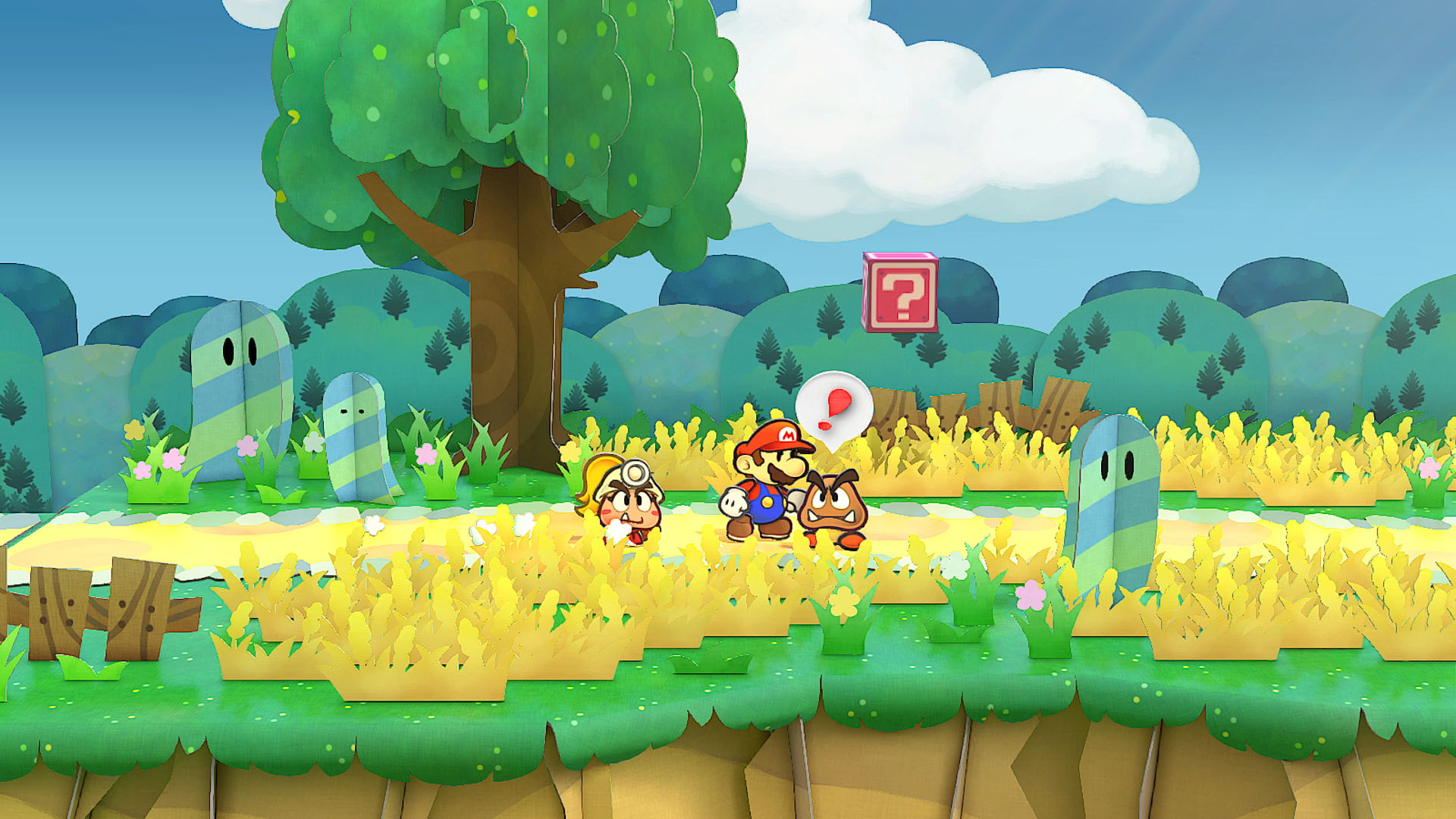
Much has been said (by me, even) over the last couple decades about Thousand-Year Door’s strengths. These days, including after this playthrough, I’d make the biggest case for its cast and its gameplay. Mario’s septet of sidekicks are generally fantastic across the board, though they do vary in the depths of their characterization or general “usefulness” in battle. Goombella’s sass and cuteness never got old across 100+ bestiary entries, and Yoshi Kid’s scrappiness is as endearing as ever. More than ever though it was shadowy Vivian who really shines, having one of the fuller character arcs in her focus chapter made more impactful with the character’s transgender identity now officially localized.
That core is rounded out by more chapter-specific characters. The likes of Rawk Hawk, Flavio and Pennington are fan favorites for a reason – but not General White. And while they don’t cross paths with Mario all that much the game does a great job of integrating both Peach and Bowser into the plot by giving them brief vignettes between chapters. Of the core players only main antagonist Grodus comes off as something of a let-down, being a bit generic and uninvolved when compared to the more recurring foes Lord Crump and Beldam.
The element that drew me back in the most though was that sweet Paper Mario combat. Most Mario RPGs have some permutation of “timed hits” at the core of its battle system. TTYD’s delivers the deepest version of that thanks to the number of partners and badges available to players paired to the ingenious idea of “performing” for an audience. Coming off the heels of last year’s Super Mario RPG remake, the greater variety available here was very much appreciated. Being able to tailor Mario’s skillset and your stats via collectible badges isn’t revolutionary, but it never felt like too much or too little.
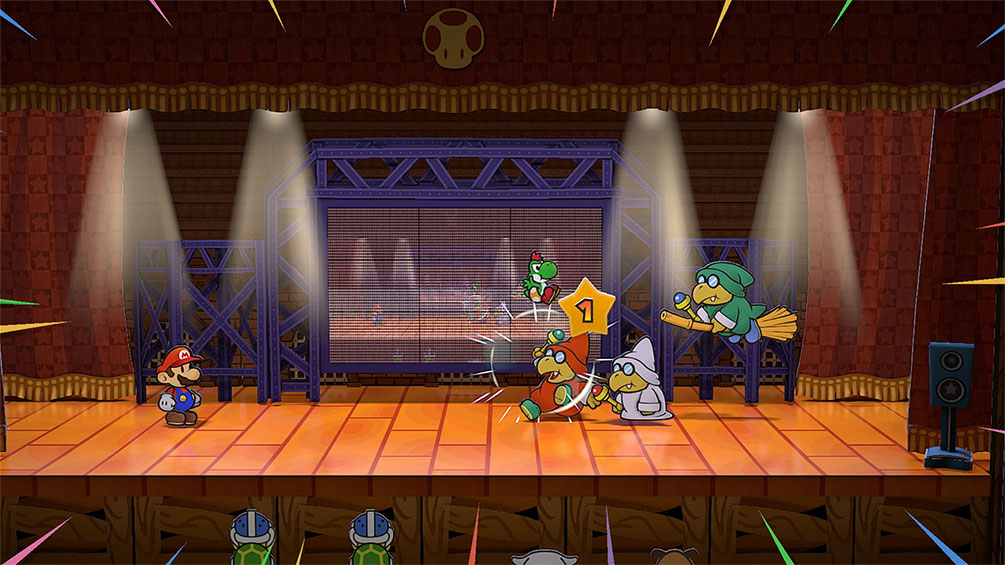
In terms of newness, the biggest impact is in the visuals. The world of TTYD is a varied one, from a dreary hamlet riddled with ham to a tropical island giving way to a piratical cove to a forest blending monochrome trees with shimmering stained glass floors. All of it is rendered spectacularly on Switch. Improvements to lighting, color, and overall detail can be found throughout the experience and only sticklers for the original’s flatter appearance would decry them. It trades some of the overt craftiness of Paper Mario: The Origami King to double down on the stylized diorama-like presentation, and I’m here for it.
The return to Rogueport is as impressive as it is welcome. Perhaps the only major concern going into this release was the change from 60 fps to 30. I struggle to think of a time where this affected playability in any meaningful way – Action Commands and Stylish Moves were going through for me without a hitch. I did note some minor slowdown in handheld mode during scenes where a large number of characters fill the screen, but those setpieces were few and fahr between.
As a returning fan of Thousand-Year Door, even more than the visuals I appreciated what quality of live improvements are here. Partners can be swapped on the fly rather than by pausing the game, emails don’t force you to stop in your tracks (save plot-relevant ones), and other minor adjustments make for an overall smoother experience. No where is that felt more than with bounding around its biomes.
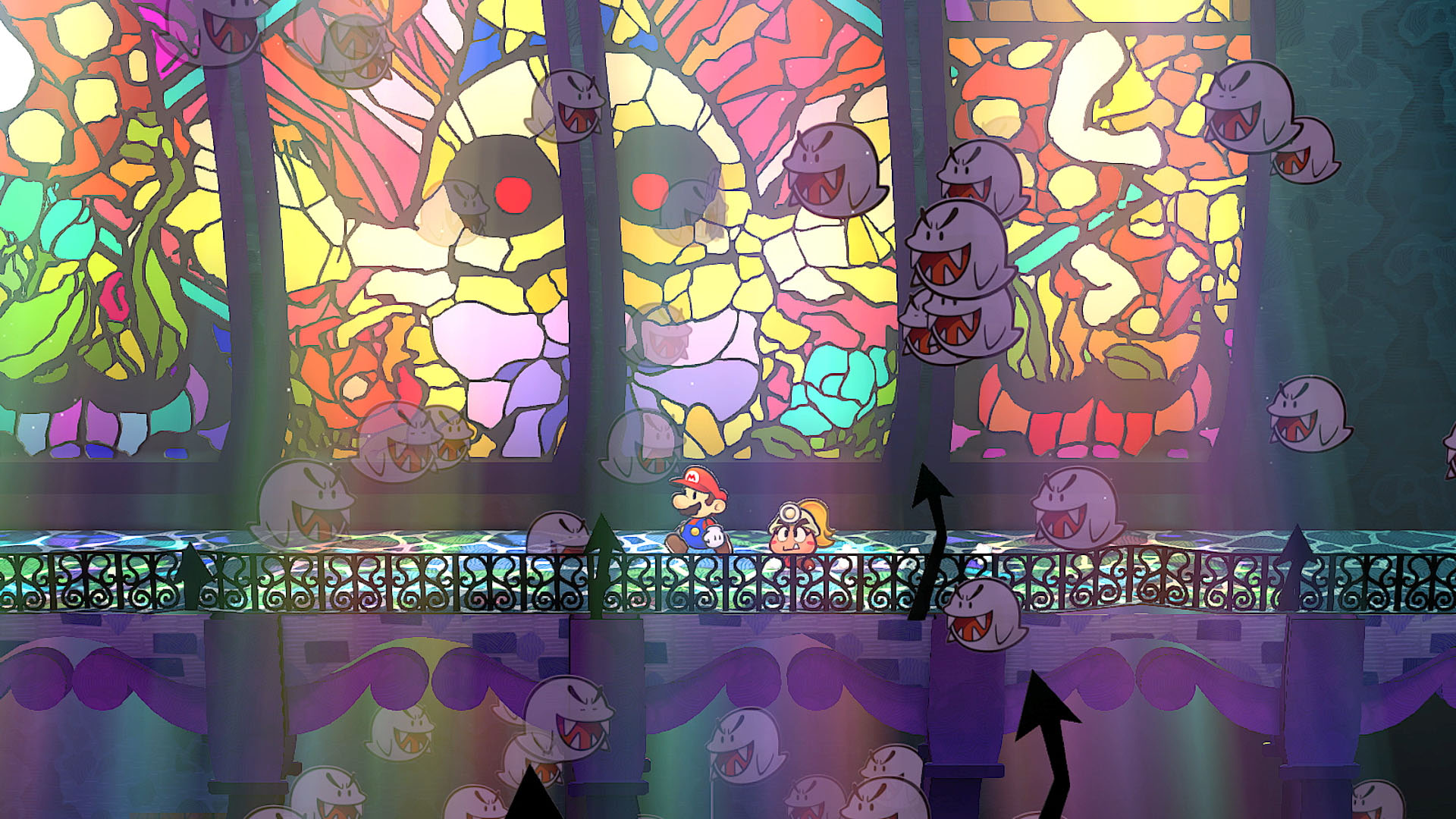
TTYD has an obsession, nay a problem, with backtracking. Sometimes it’s within a single chapter’s “themed” area and other times it’s going from one corner of the game’s world to the other. It’s pronounced in the game’s sidequests, but even mandatory portions are bogged down by this element. On Switch there are now some well placed Warp Pipes that take the tedium down a few notches. I did find myself pacing across train cars a bit too much during one mandatory portion of the game, followed shortly after by what was previously the most egregious case of backtrackery, but things were nowhere near as bad as they used to be.
One area where I’d have liked to see some improvement is the game’s inventory system. See, you’re only able to carry a finite number of usable items at a time. That number can be increased if you delve into one of the game’s main challenges, at least. Unfortunately the game’s shop-based storage system has a hard cap of about thirty items and can’t be improved. It leads to a lot of tossing or wasting of things and time spent on unnecessary management at storefronts. This gets even worse when you factor in the game’s recipe system for combining food items, where you might be gathering certain items to use as ingredients and storing others for later. Why this inventory-based restriction was maintained, I have no idea.
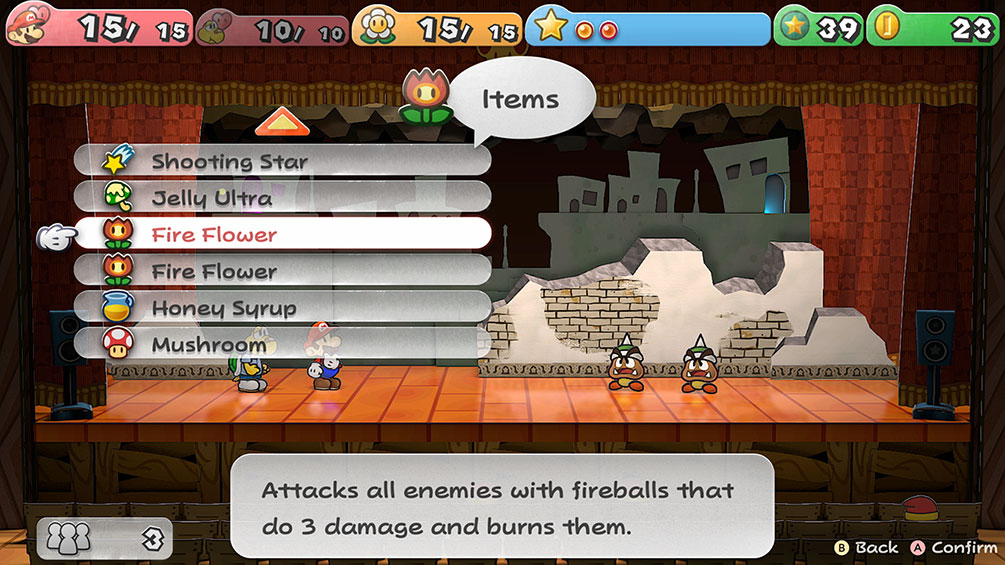
I could go on about things I adore in Thousand-Year Door. It’s a satisfying RPG in its own right that keeps things simple when you look at the genre as a whole and exceptional when measured next to its seriesmates. Exploring its world for Star Pieces and taking in line after line of dialog blend so well with the already gushed over combat and characters. Some irksome backtracking and inventory management aside, the only thing I can complain about walking away from this one is Nintendo’s attitude towards the series since its original release.
At the risk of evoking every tired take dating back to Sticker Star’s 2012 release, revisiting TTYD has reignited the hope that the series can get this creative with its world-building and unorthodox with its handling of the wider Mushroom Kingdom. Despite the differing developers across titles, it’s the same spirit that brought us to the Bean-Bean Kingdom and introduced us to Geno and Mallow. I’ll take that over more Toads any day.
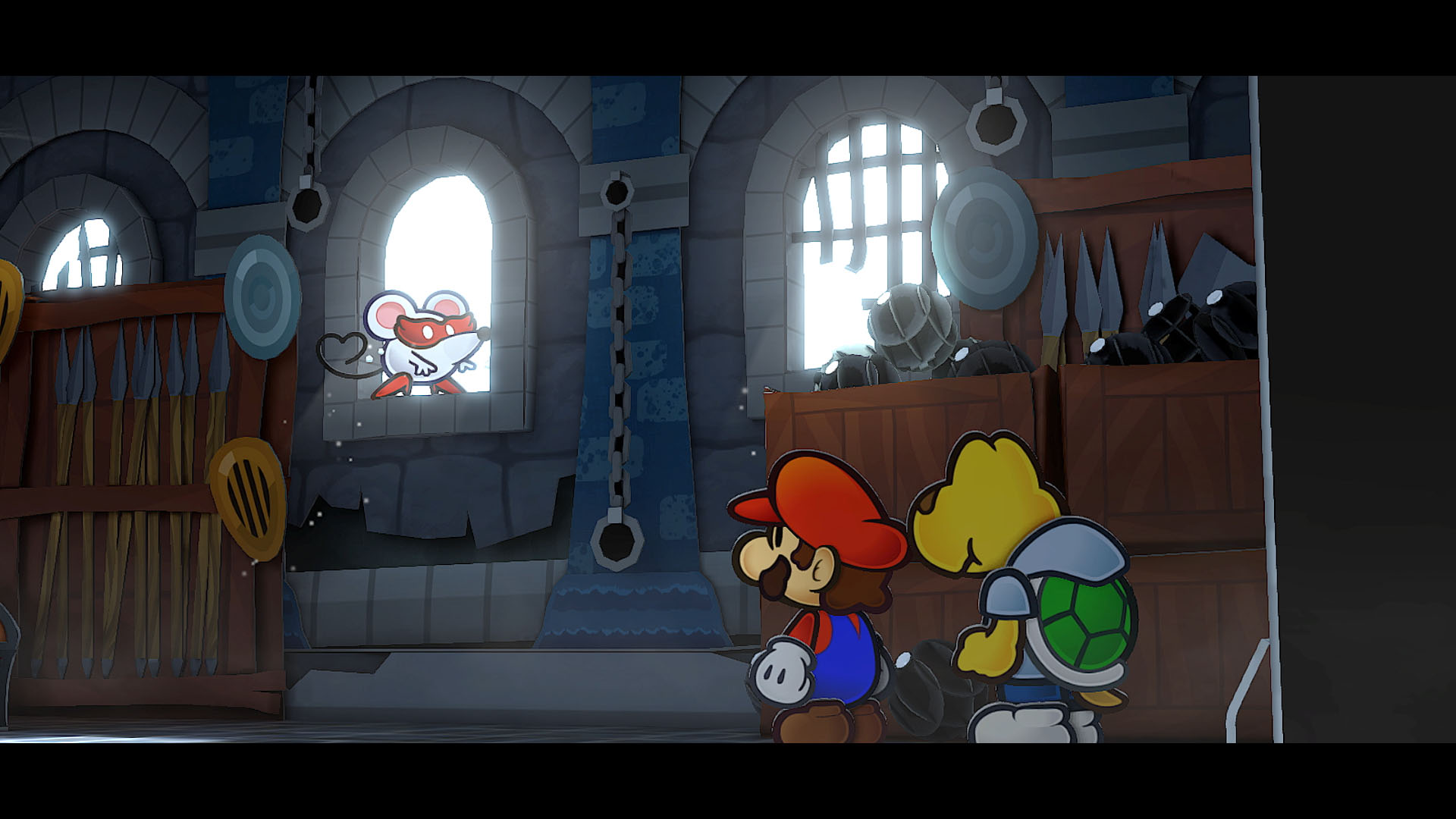
That might all read like gibberish if you’re new to the roller coaster ride that has been Mario RPGs, and that’s okay. I’ll stop yelling at you from my lawn and instead leave you with this: Paper Mario: The Thousand-Year Door is a highlight of Mario’s entire existence, and you owe it to yourself to find out why this modern classic is so beloved firsthand.
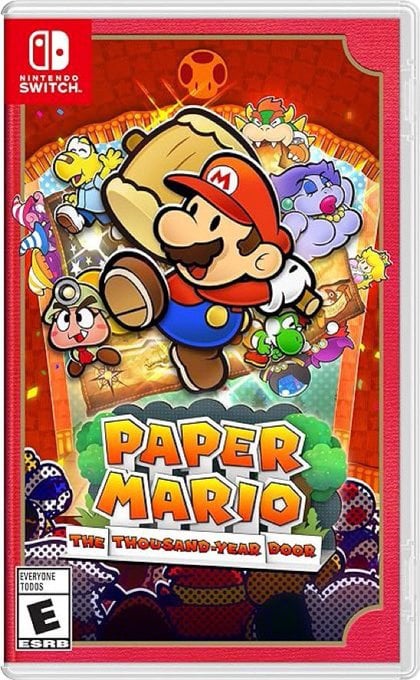
System: Nintendo Switch
Release Date: May 23, 2024
Categories: RPG
Publisher: Nintendo
Developer: Intelligent Systems


